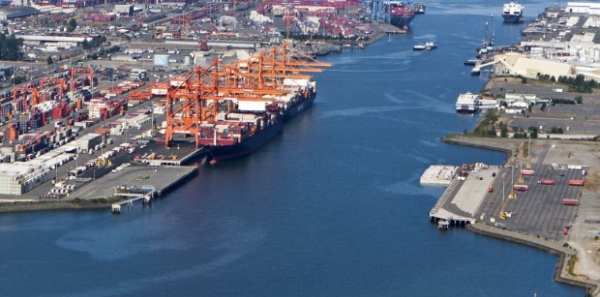The Port of Tacoma Commission on Tuesday voted unanimously to phase out greenhouse gas (GHG) emissions under the Port’s direct control by 2040.
Strategies for Port-controlled assets include buying electric vehicles, replacing natural gas in buildings with electricity, and purchasing renewable fuels to displace fossil fuels. The Port could also purchase offset credits for remaining emissions that can’t be eliminated by other measures.
The commission addressed what are called Scope 1 and Scope 2 greenhouse gases, which represent direct emissions from Port-owned and operated buildings and vehicles, and electricity purchased for Port facilities. This contrasts with Scope 3 emissions, which are from sources not directly controlled by the Port, such as cargo ships, drayage trucks, and facilities leased to private companies.
- Scope 1 emissions or direct emissions are GHG emissions from the sources that are owned or controlled by the reporting entity. For shipping this refers primarily to emissions from fuel consumption.
- Scope 2 emissions or indirect emissions are GHG emissions specifically from the generation of purchased or acquired electricity, steam, heat, or cooling consumed by the reporting entity.
- Scope 3 refers to all indirect GHG emissions from all sources whether upstream or downstream of a value chain and which are not owned or controlled by the reporting entity directly.
The Port takes seriously our commitment to the environment and clean air. Accelerating our net zero emission target gives us an opportunity to demonstrate climate leadership and take action where we have direct control.
… said Deanna Keller, Port of Tacoma commission president.
The Port of Tacoma’s effort is part of the regional Northwest Ports Clean Air Strategy for phasing out seaport-related emissions. The Port is a Managing Member of The Northwest Seaport Alliance (NWSA), which manages container operations in both Tacoma and Seattle.






























































